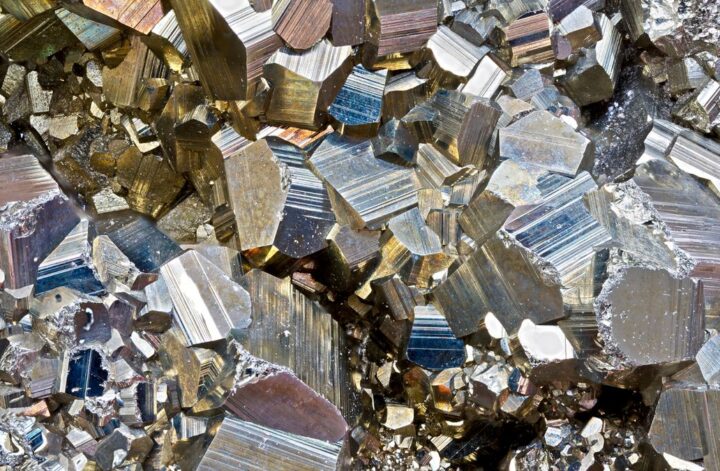Pyrite, a stunning metallic brassy yellow mineral, is composed of sulfur and iron, and is often used in pyrite gemstones. This enchanting pyrite stone is renowned for its:
- Protective properties
- Encouraging inner strength
- Unlocking creativity
- Purifying spaces
The delightful name pyrite comes from the Greek word pyr, which means fire, and it is often found in the form of pyrite crystals.
Belonging to the pyrite group, which includes other wonderful minerals such as marcasite and enargite, pyrite is one of the sulfide minerals, composed of sulfur and iron. Its stunning metallic luster, often with gorgeous striations or flecks of tarnished yellow on the surface, makes it quite affordable, ranging from $1-$8 per carat. Interestingly, some pyrite specimens can even contain real gold!
Iron Sulfide Mineral
As an iron sulfide mineral, iron pyrite is composed of the delightful combination of sulfur and iron. It is part of the beautiful cubic crystal system and can form stunning octahedral or pyritohedron shapes with five-sided faces. The pyrite crystal can come in various forms. It can be found as flakes, small cubes, or even a golden layer on fossils! With a hardness score between 6 and 6.5 on the Mohs hardness scale, pyrite is quite a hard mineral.
The benefits of pyrite and gold are numerous, such as their beautiful brassy yellow color and glossy metallic luster. However, there are some differences between the two.
- Pyrite has a more distinct shape with sharper edges, while gold has a softer, rounder shape.
- Pyrite has a higher Mohs hardness rating than gold does, so it can scratch glass more easily.
- Gold is softer and more malleable than pyrite.
- When polished, pyrite has a striking black or grey-black hue that sets it apart from gold.
Metallic Luster and Fool’s Gold
Pyrite’s beautiful metallic luster and golden hue often lead to it being mistaken for gold. This resemblance earned it the nickname “Fool’s Gold,” as it can be mistaken for the precious metal by the untrained eye.
One amazing characteristic that sets pyrite apart from gold is that its faces are striated. In a positive light, pyrite is often referred to as ‘fool’s gold’ due to its resemblance to the precious metal.
